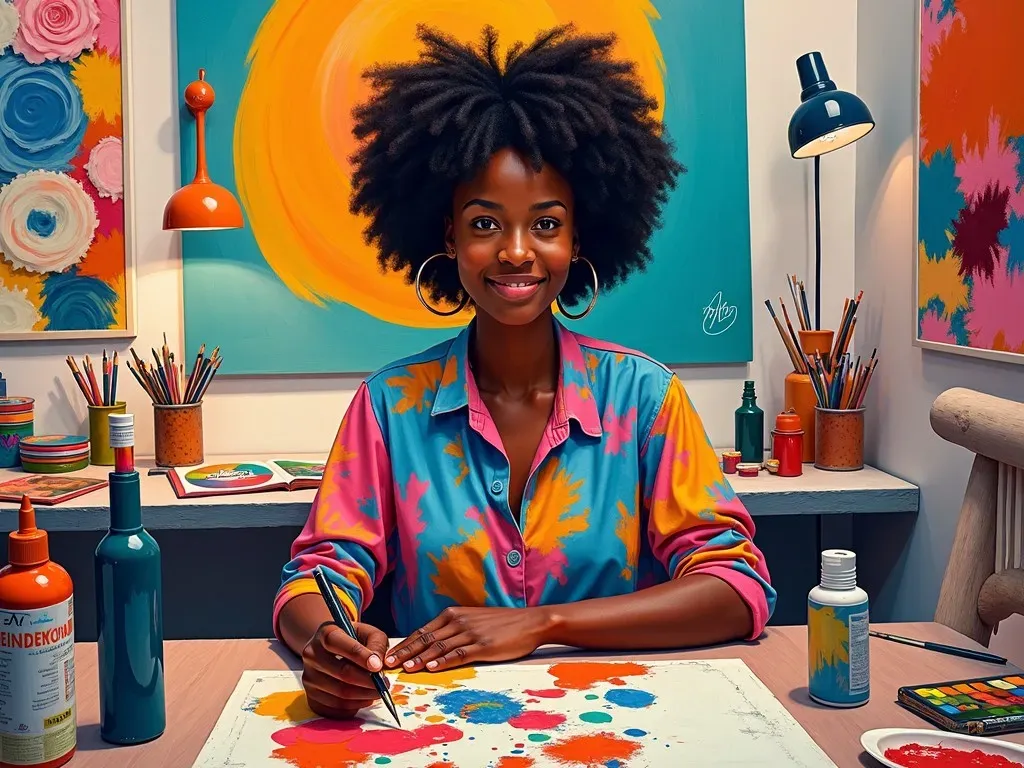Important artists of the 21st century have significantly influenced the art world, bringing new Techniques, ideas, and perspectives. From bold concepts to innovative materials, these artists have pushed boundaries and redefined what art means in today’s society. In this article, we delve into the lives and works of some of the prominent painters and visual artists whose contributions are shaping the cultural landscape of the current century.
The Landscape of 21st-Century Art
In the 21st century, art has transcended traditional mediums and embraced technology, social issues, and personal narratives. Many artists are not only responding to historical contexts but are also engaging with contemporary themes such as identity, politics, and environmental concerns. Below is a list highlighting some of the most renowned artists of this century:
| Artist Name | Birth Year | Notable Works | Primary Mediums |
|---|---|---|---|
| Mark Bradford | 1961 | "Boys in the Hood" | Collage, Painting |
| Yayoi Kusama | 1929 | "Infinity Mirror Room" | Installation, Painting |
| Banksy | Unknown | "Girl with Balloon" | Street Art |
| Takashi Murakami | 1962 | "Flower Ball" | Painting, Sculpture |
| Amy Sherald | 1973 | "Michelle LaVaughn Robinson" | Painting |
Important Artists of the 21st Century
Mark Bradford
Mark Bradford, an American contemporary artist, has made waves in the art world with his collaged paintings that explore themes of race, class, and history. His work often incorporates materials found in his Los Angeles neighborhood, making his pieces a reflection of urban life. Bradford’s innovative use of collage and his ability to combine various influences make him a standout figure in 21st-century art.
Yayoi Kusama
Known for her iconic polka dots and infinity rooms, Yayoi Kusama is deeply influential in contemporary art. Her immersive installations challenge viewers to confront their perceptions of space and self. Kusama’s exploration of mental health themes resonates globally, making her a key figure in the movement towards embracing vulnerability in art.
Banksy
A mysterious figure in the art world, Banksy has created provocative street art that often addresses political and social issues. His work blends humor with powerful messages, making art accessible to a broader audience. Banksy’s impactful creations raise questions about consumerism, war, and the state of society, solidifying his status as one of the most important artists of the era.
Takashi Murakami
A leading figure in the realm of contemporary Japanese art, Takashi Murakami’s work merges traditional Japanese painting techniques with contemporary pop culture. His "Superflat" theory blurs the lines between high and low art, creating a unique aesthetic that appeals to both art collectors and mainstream audiences.
Amy Sherald
With her trademark portraits that celebrate Black identity, Amy Sherald gained international acclaim for her painting of Michelle Obama, which was displayed at the National Portrait Gallery. Sherald’s distinctive style, characterized by her use of vivid colors and meticulous patterns, not only challenges conventional representations of race but also emphasizes individuality within the Black community.
The Rise of Multidisciplinary Artists
The 21st century has witnessed the emergence of artists who work across various disciplines. Some notable examples include:
- Kara Walker: Known for her provocative silhouette installations that engage with themes of race and history.
- Matthew Barney: Creates complex, layered narratives that combine performance, sculpture, and film.
- Brandon Stanton: Through his work on "Humans of New York," Stanton uses photography and storytelling to capture the essence of individual human experiences.
| Artist Name | Notable Achievements | Mediums |
|---|---|---|
| Kara Walker | MacArthur Fellow, "A Subtlety" Installation | Sculpture, Installation |
| Matthew Barney | "The Cremaster Cycle" Series | Film, Sculpture |
| Brandon Stanton | "Humans of New York" Project | Photography, Storytelling |
Impact of Social Media on Artists
Social media platforms have changed how artists connect with audiences, share their work, and engage with the cultural dialogue. Artists can now reach global audiences without the traditional gatekeeping of galleries and museums.
- Instagram: A vital platform for artists to showcase their work, gain followers, and even sell pieces directly to consumers.
The Shift in Art Consumption
Traditional ways of consuming art have evolved. The rise of digital art has altered collectors’ and audiences’ perceptions. This shift is exemplified by artists who create NFTs (non-fungible tokens) and utilize platforms such as SuperRare and OpenSea.
Key Figures in the Digital Art Scene
| Artist Name | Notable Work | Platform |
|---|---|---|
| Beeple | "Everydays" | NFTs |
| Pak | "The Merge" | NFTs |
| XCOPY | "Right-click and Save As Guy" | NFTs |
Frequently Asked Questions (FAQ)
Q: Who are some of the most influential female artists of the 21st century?
A: Noteworthy female artists include Yayoi Kusama, Amy Sherald, and Jenny Holzer, each contributing significantly to contemporary art.
Q: How has technology influenced contemporary artists?
A: Technology has enabled artists to explore new mediums, such as digital art and NFTs, while also facilitating broader audience reach through social media.
Q: Are there any artists using art for activism?
A: Yes, artists like Banksy and Kara Walker use their art as a form of social and political commentary, addressing issues such as racial inequality and poverty.
Q: What role do galleries play for contemporary artists today?
A: While galleries still offer opportunities for exposure and sales, many artists also utilize online platforms to reach a more extensive audience directly.
In conclusion, the important artists of the 21st century epitomize a new wave of creativity that challenges conventions and fosters dialogue. Their diverse backgrounds, innovative techniques, and engagement with contemporary issues solidify their essential role in this evolving artistic landscape. As we continue to explore, document, and celebrate their works, we gain deeper insights into the complexities of modern human experiences conveyed through art.
For further exploration on important artists of the 21st century, visit Artland Magazine for a detailed overview.
